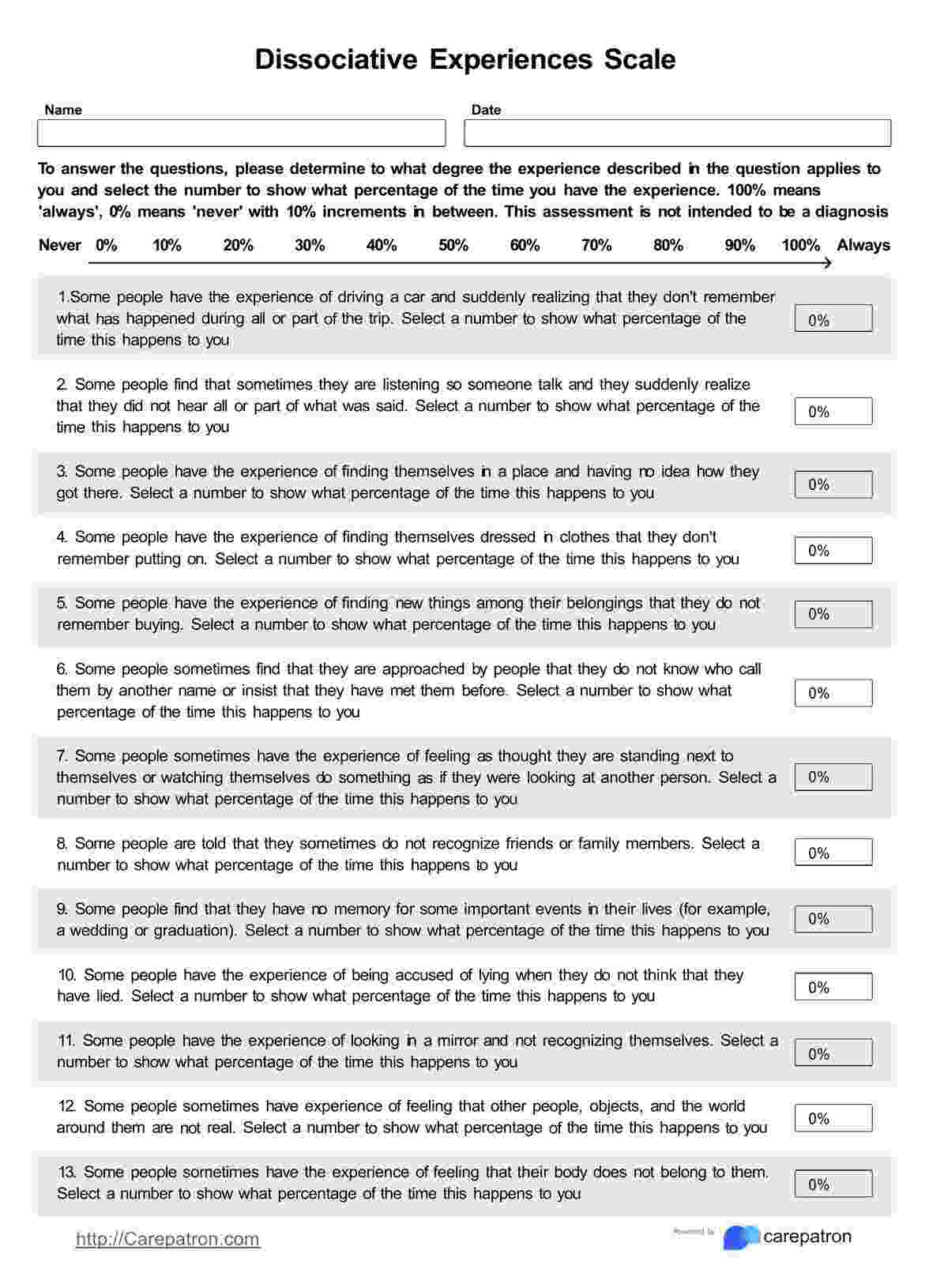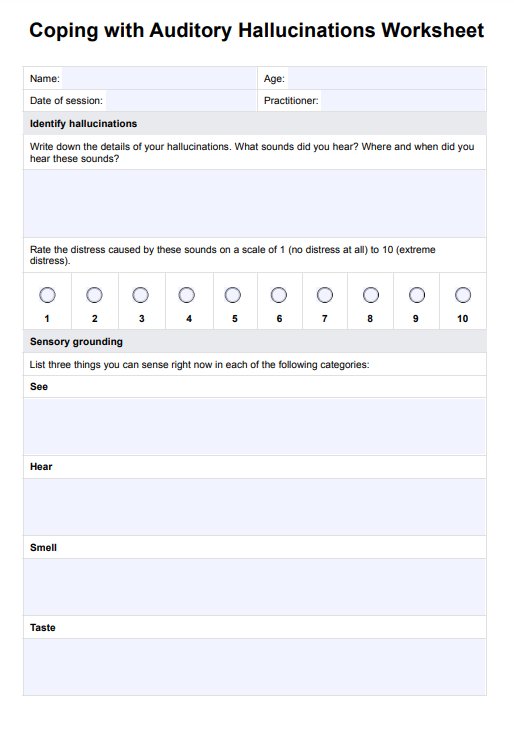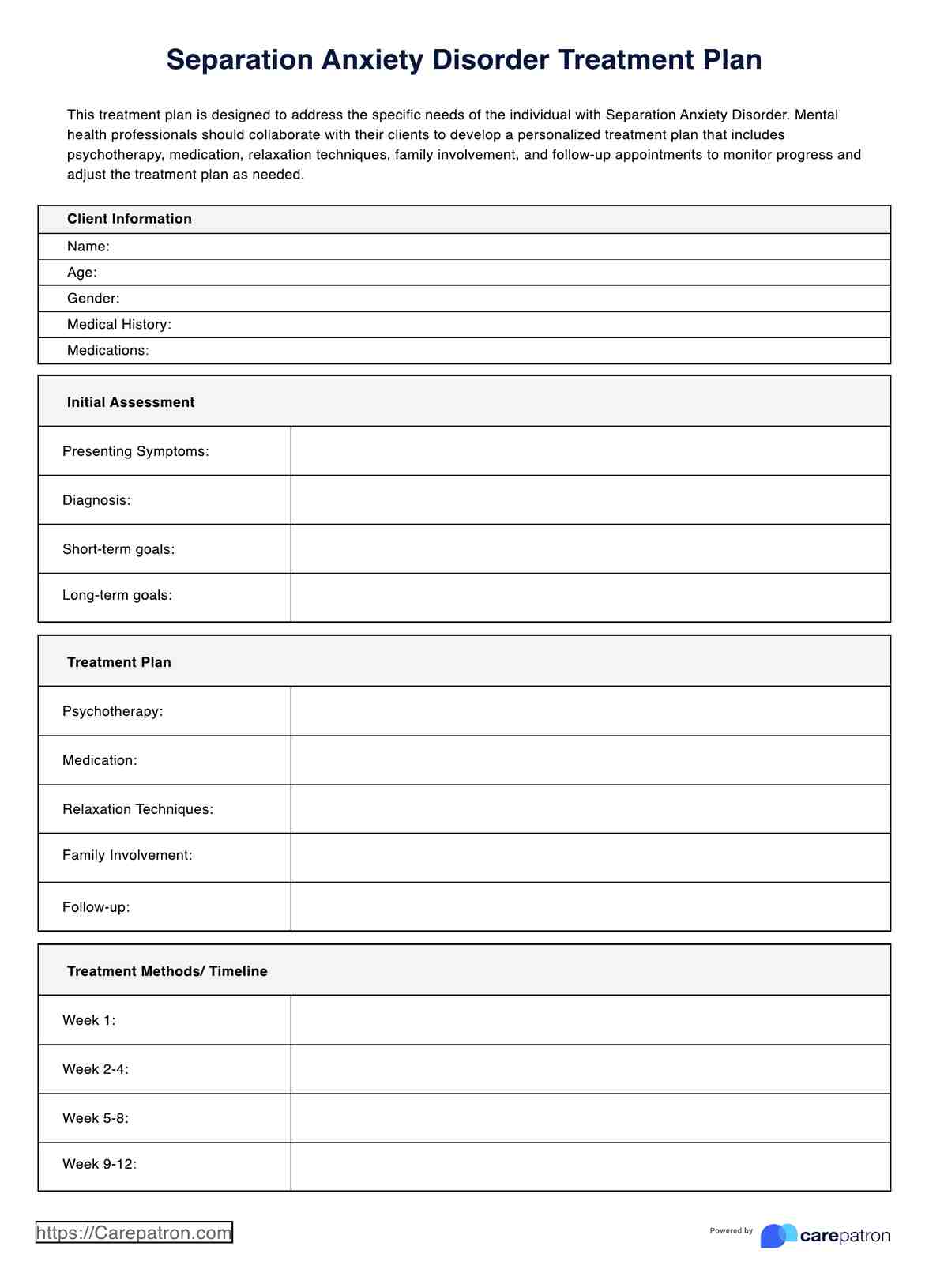Gaslighting Worksheet
Use our Gaslighting Worksheet to empower your clients. Help patients recognize and overcome gaslighting, facilitate healing, and improve mental wellness.


What is gaslighting?
Gaslighting is a form of psychological manipulation in which a person, often a manipulator, makes a victim question their own reality, memory, or perceptions. The goal of gaslighting is to gain power and control over the victim by undermining their confidence and sense of reality. It can lead to significant psychological distress, including anxiety, depression, and a loss of self-esteem.
The term originated from the 1938 play "Gas Light" by Patrick Hamilton and its subsequent film adaptations, where a husband manipulates his wife into thinking she's losing her sanity. In psychological research and education, gaslighting is recognized as a significant tactic in abusive relationships but can occur in various contexts, including familial, romantic, professional, and even societal interactions.
Gaslighting often occurs in relationship dynamics where there is a significant power imbalance. This can manifest in various relationships, including between parents and children, romantic partners, employers and employees, teachers and students, or caregivers and their dependents. In these situations, the gaslighter leverages their authority or control to manipulate the victim's perception of reality.
For example, in a family setting, a parent may use gaslighting tactics to control or discipline their child, making the child doubt their own feelings or experiences. In a romantic relationship, a partner may use gaslighting to maintain dominance, often leading to a cycle of emotional abuse and dependency. Similarly, in a workplace, a superior may use gaslighting to undermine an employee's confidence and assert control.
Humiliation is another aspect closely related to gaslighting. The gaslighter may use belittling comments, mocking, or public shaming as a way to erode the victim's self-esteem and assert dominance. This humiliation can be particularly damaging in relationships where the victim is dependent on the gaslighter for emotional or financial support, such as between an earning spouse and a non-earning spouse.
Understanding gaslighting and its associated relationship dynamics is crucial for mental health professionals and individuals alike to identify and address this harmful behavior.
Gaslighting Worksheet Template
Gaslighting Worksheet Example
Examples of gaslighting tactics
Gaslighters employ various tactics to destabilize their victims. If you know someone manipulative, you might have already seen some of these red flags:
- Denial: The gaslighter denies saying or doing something, even when there is evidence to the contrary.
- Trivializing: They minimize the victim's feelings or thoughts, making them feel unimportant or overly sensitive.
- Withholding: The gaslighter pretends not to understand or refuses to listen to the victim's concerns.
- Countering: They question the victim's memory or sanity, often challenging their recollection of events.
- Diverting: The gaslighter changes the subject or questions the victim's credibility to avoid addressing the issue.
It's important to note that gaslighters often use multiple tactics together, creating a confusing and disorienting environment for the victim. Recognizing these gaslighting strategies is the first step in combating gaslighting and reclaiming one's sense of reality.
What is a Gaslighting Worksheet?
A Gaslighting Worksheet is a therapeutic tool designed for mental health professionals to use with their patients or for individuals to use independently. The purpose of this worksheet is to help individuals identify instances of gaslighting, understand its impact, and develop strategies to protect themselves from this form of psychological manipulation.
Our worksheet template contains a series of prompts and questions that guide the user through the process of recognizing gaslighting behaviors, reflecting on their experiences, and formulating responses to counteract the manipulation. It serves as a structured framework for exploring the dynamics of gaslighting and its effects on one's mental well-being.
Goals of this worksheet
The Gaslighting Worksheet is designed with several key objectives in mind:
- Recognition: It helps users identify gaslighting tactics and behaviors in various interactions, providing clarity on what constitutes gaslighting.
- Self-reflection and self-awareness: The worksheet aims to increase the user's awareness of the emotional and psychological impact of gaslighting, fostering a deeper understanding of its effects.
- Empowerment: By affirming the user's relevant experiences and perceptions, the worksheet empowers individuals to trust themselves, even when their reality is being challenged.
- Coping strategies: It provides practical tools and techniques for responding effectively to gaslighting and protecting oneself from its negative consequences.
Overall, the Gaslighting Worksheet is a valuable resource for anyone looking to navigate and counteract the manipulative tactics of gaslighting, promoting mental well-being and healthier interpersonal dynamics.
How to use our Gaslighting Worksheet template
Our Gaslighting Worksheet template is designed to be user-friendly and effective for both mental health professionals and their patients. Here's how to make the most of this resource:
Step 1: Access this template
The first step is to access the Gaslighting Worksheet template. Mental health professionals can download the template via the Carepatron app and provide it to their patients during therapy sessions, either by printing it or sending it directly through the patient portal. Alternatively, individuals can access the template for personal use to explore their experiences with gaslighting from our Resource Library.
Step 2: Explain the template
Before starting the worksheet, it's important for mental health professionals to explain its purpose and structure to their patients. This includes discussing what gaslighting is, how it can manifest, and how the worksheet can help in identifying and coping with gaslighting behaviors.
H3: Step 3: Identify gaslighting behaviors
Using the template, patients are encouraged to reflect on their experiences and identify specific instances where they may have been subjected to gaslighting. This step involves writing down situations, conversations, or behaviors that made them question their reality or feel manipulated.
Step 4: Analyze the impact
After identifying gaslighting behaviors, patients should assess the impact of these behaviors on their emotions, thoughts, and overall mental health. This step helps in understanding the severity of the gaslighting and its effects on their well-being.
Step 5: Develop coping strategies
With the insights gained from the worksheet, patients can work with their mental health professional to develop strategies to protect themselves from gaslighting. This might include setting boundaries, improving communication skills, and building a support system. These strategies are mostly done in the mental health session, but the worksheet itself helps patients remember what they can do.
Step 6: Reflect on the process
Finally, patients are encouraged to reflect on their experience with the worksheet. This can involve discussing their findings with their therapist, journaling about their insights, or considering further steps they can take to address gaslighting in their lives.
By following these steps, both mental health professionals and patients can effectively use the Gaslighting Worksheet template to recognize, understand, and counteract gaslighting, promoting a healthier and more empowered sense of self.
Gaslighting warning signs to look out for
Recognizing the warning signs of gaslighting is crucial in identifying and addressing this manipulative behavior. Here are some key indicators to be aware of:
Denial and distortion of reality
One of the most common signs of gaslighting is when the manipulator consistently denies saying or doing something, even when there is clear evidence to the contrary. They may distort facts, reinterpret events, or lie outright to create doubt in the victim's mind.
For example, a gaslighter might deny making a hurtful comment, claiming it was never said or that it was just a joke or a prank, leaving the victim questioning their memory or perception. It's a strategy that bullies commonly use.
Trivializing feelings and needs
Gaslighters often minimize or trivialize the victim's feelings, making them feel overly sensitive or irrational. They may dismiss the victim's concerns or emotions as unimportant, saying things like "You're overreacting" or "You're too emotional." This tactic undermines the victim's self-esteem and makes them feel that their feelings are not valid.
Withholding and stonewalling
Withholding information and stonewalling are tactics used by gaslighters to avoid accountability and maintain control. The gaslighter may refuse to listen, communicate, or engage in meaningful discussions, often ignoring the victim's attempts to address issues. This creates a sense of isolation and helplessness in the victim, as they cannot resolve conflicts or meet their needs. This strategy is more often found among caretakers and providers.
Shifting blame and projecting fault
Gaslighters are adept at shifting blame and projecting their faults onto the victim. They may accuse the victim of being the manipulative or dishonest one, turning the tables and making the victim doubt their own actions and intentions. For example, a gaslighter might accuse the victim of being unfaithful or paranoid when it is, in fact, the gaslighter who is exhibiting these behaviors. Alternatively, they may try to dig up other issues in the past to cover up the current issue.
Isolation and control
A key strategy of gaslighting is to isolate the victim from their support system, making them more dependent on the gaslighter. The manipulator may criticize or undermine the victim's relationships with friends and family, or create situations that limit the victim's social interactions. This isolation increases the victim's vulnerability to further manipulation and control.
Being aware of these warning signs can help individuals recognize gaslighting in their relationships and take steps to protect themselves from its harmful effects.
Commonly asked questions
Gaslighting serves the purpose of exerting control and power over the victim by making them doubt their reality, thereby increasing the manipulator's dominance and influence in the relationship.
Gaslighting manipulates the victim by causing them to question their memory, perception, and sanity, leading to confusion, loss of confidence, and a reliance on the gaslighter for validation.
Gaslighting can be highly effective in manipulating the victim's thoughts and emotions, often resulting in a significant impact on their mental health and well-being if not addressed.


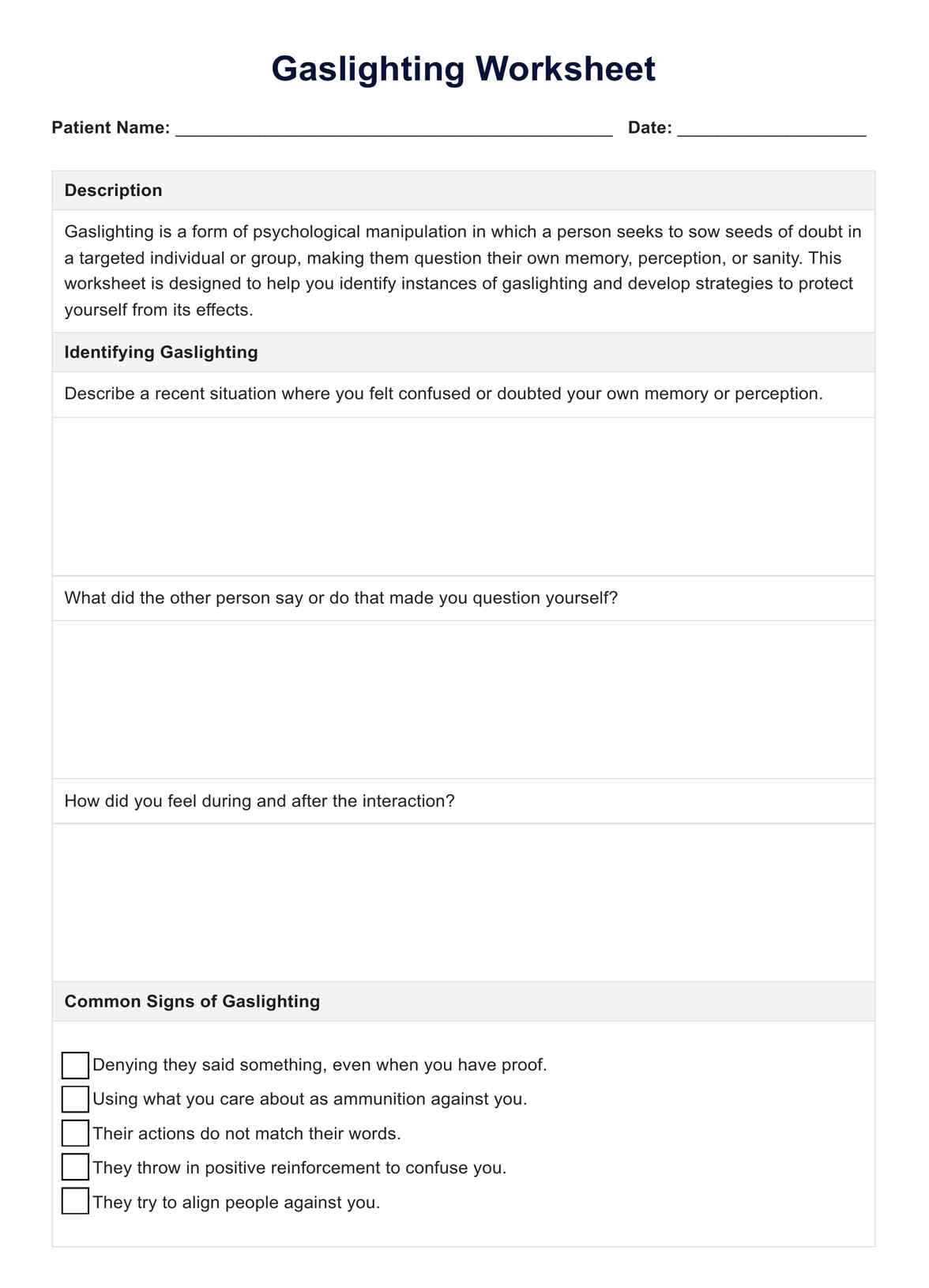
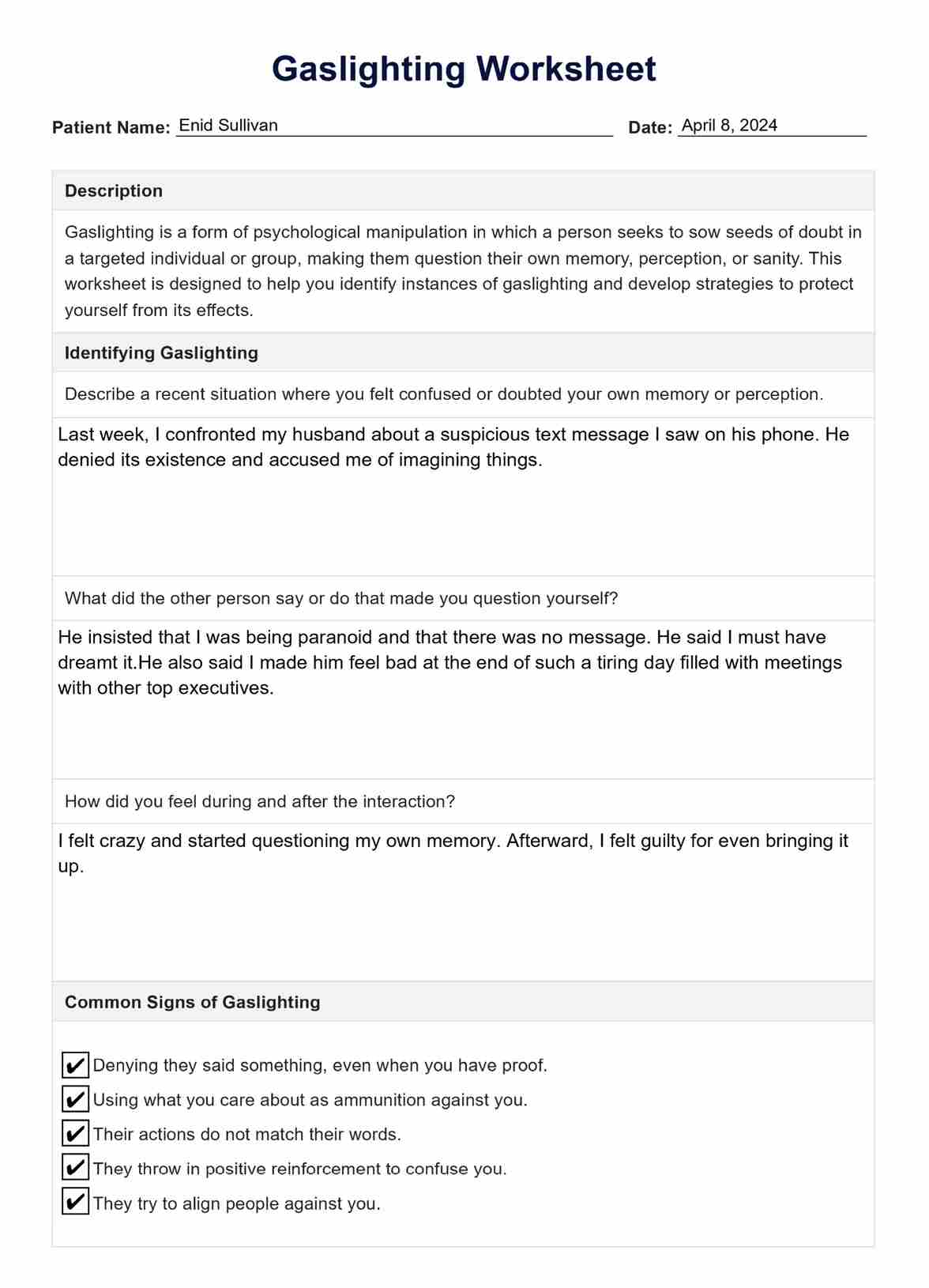
















-template.jpg)




















































































